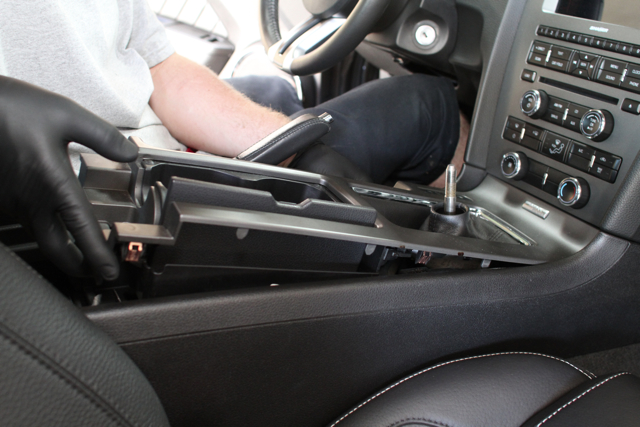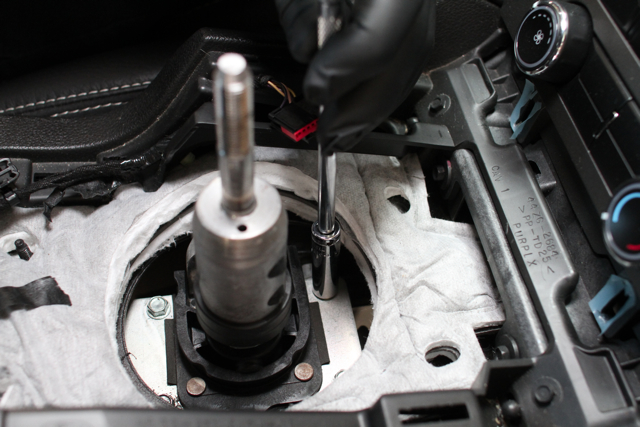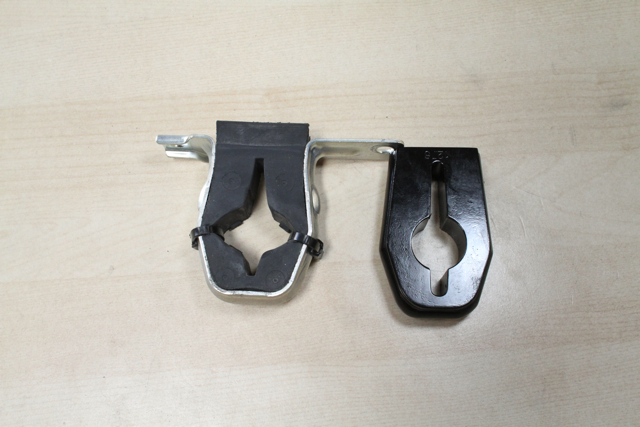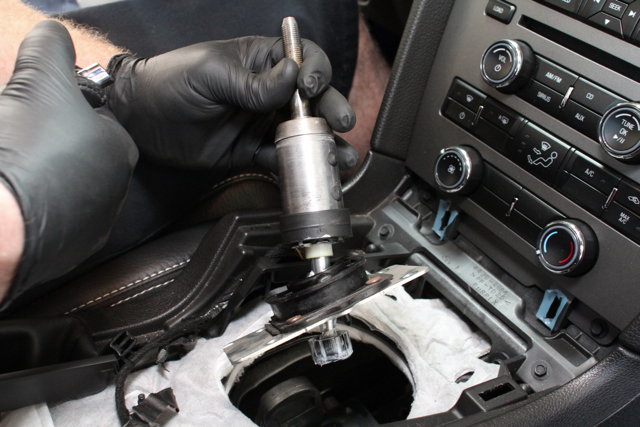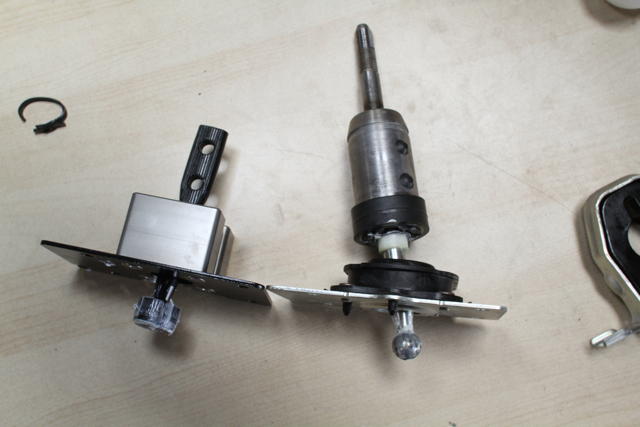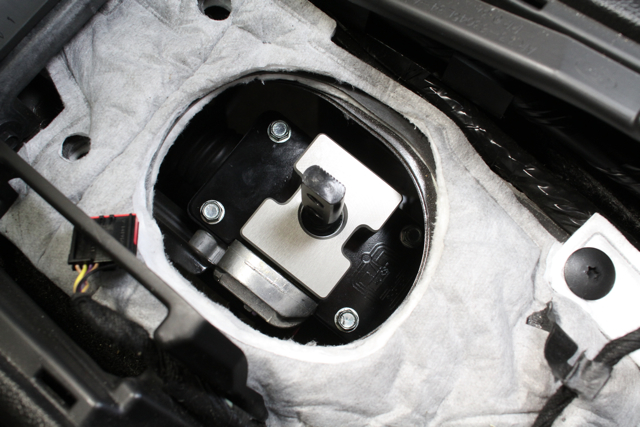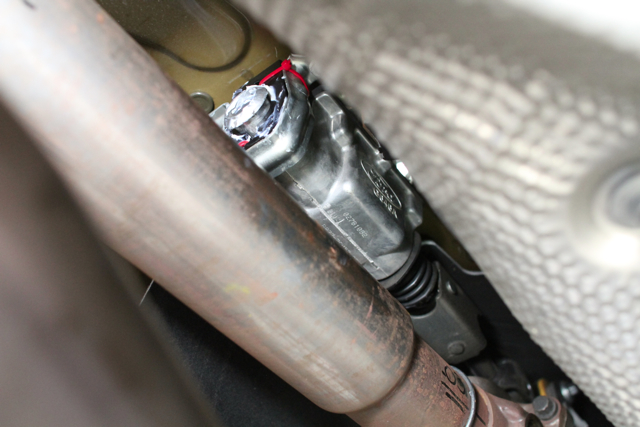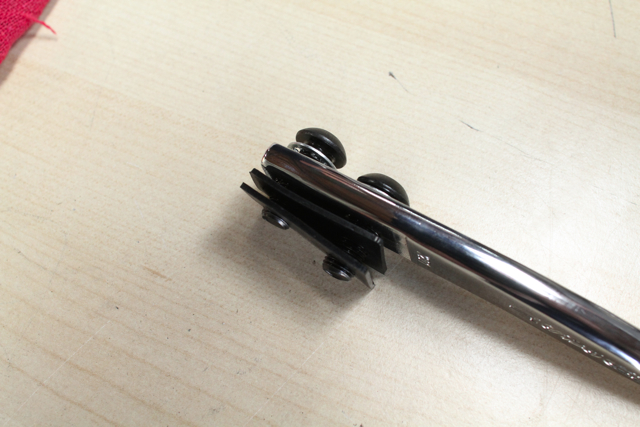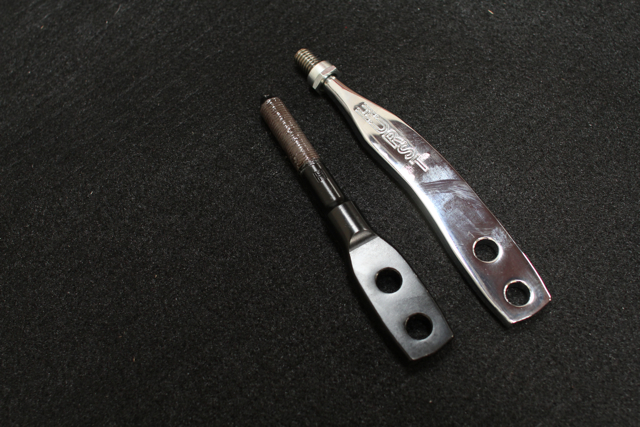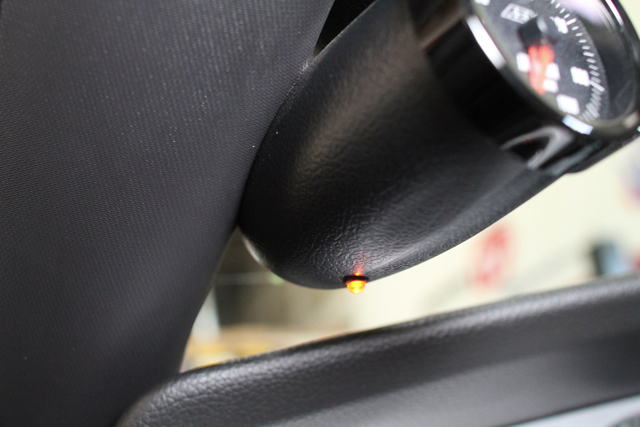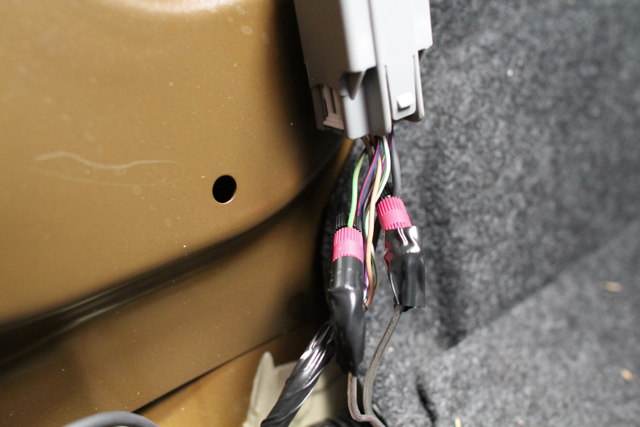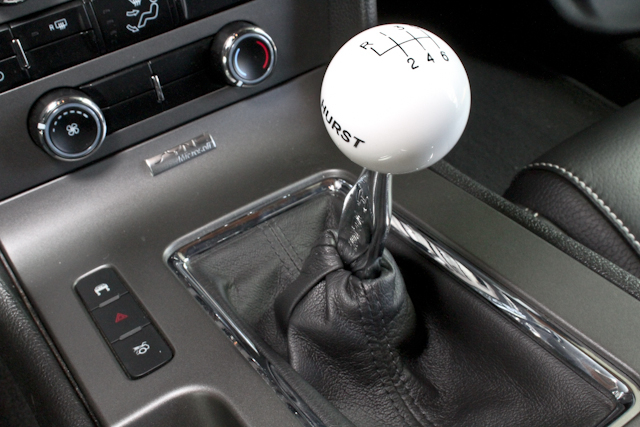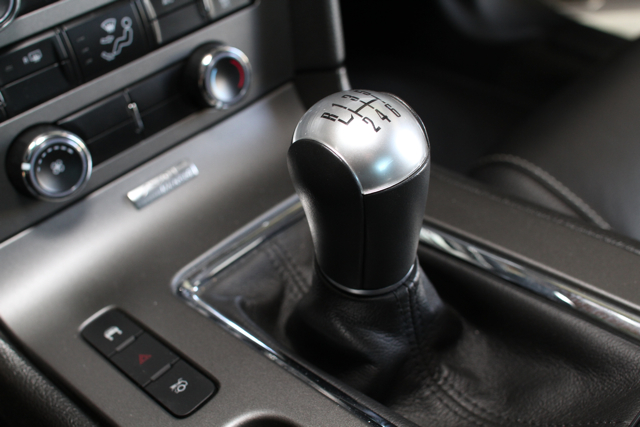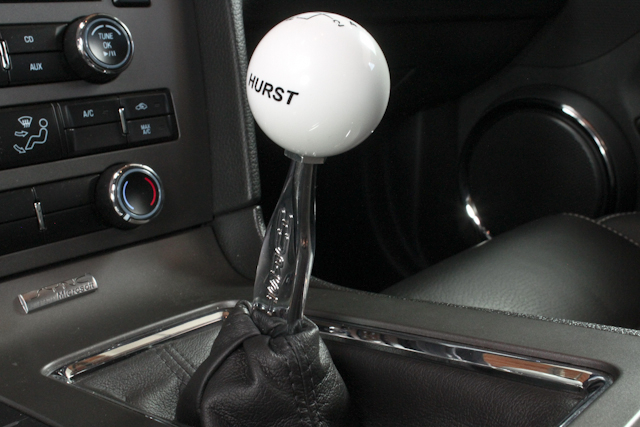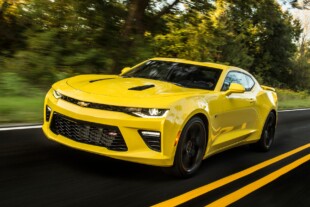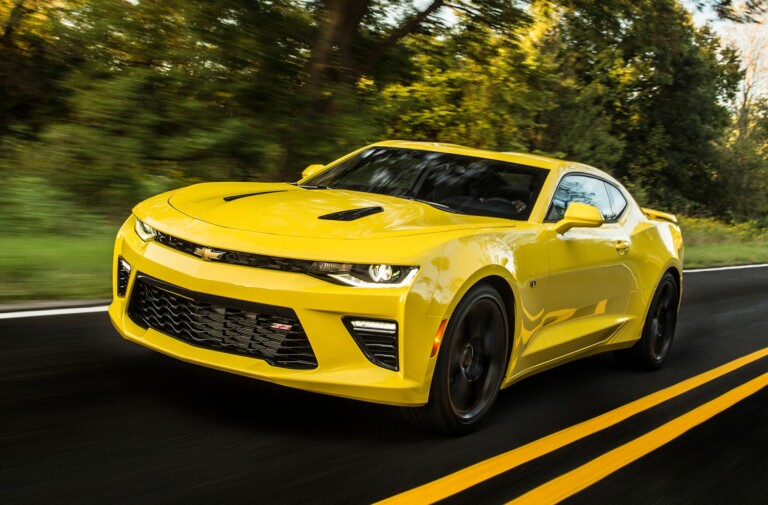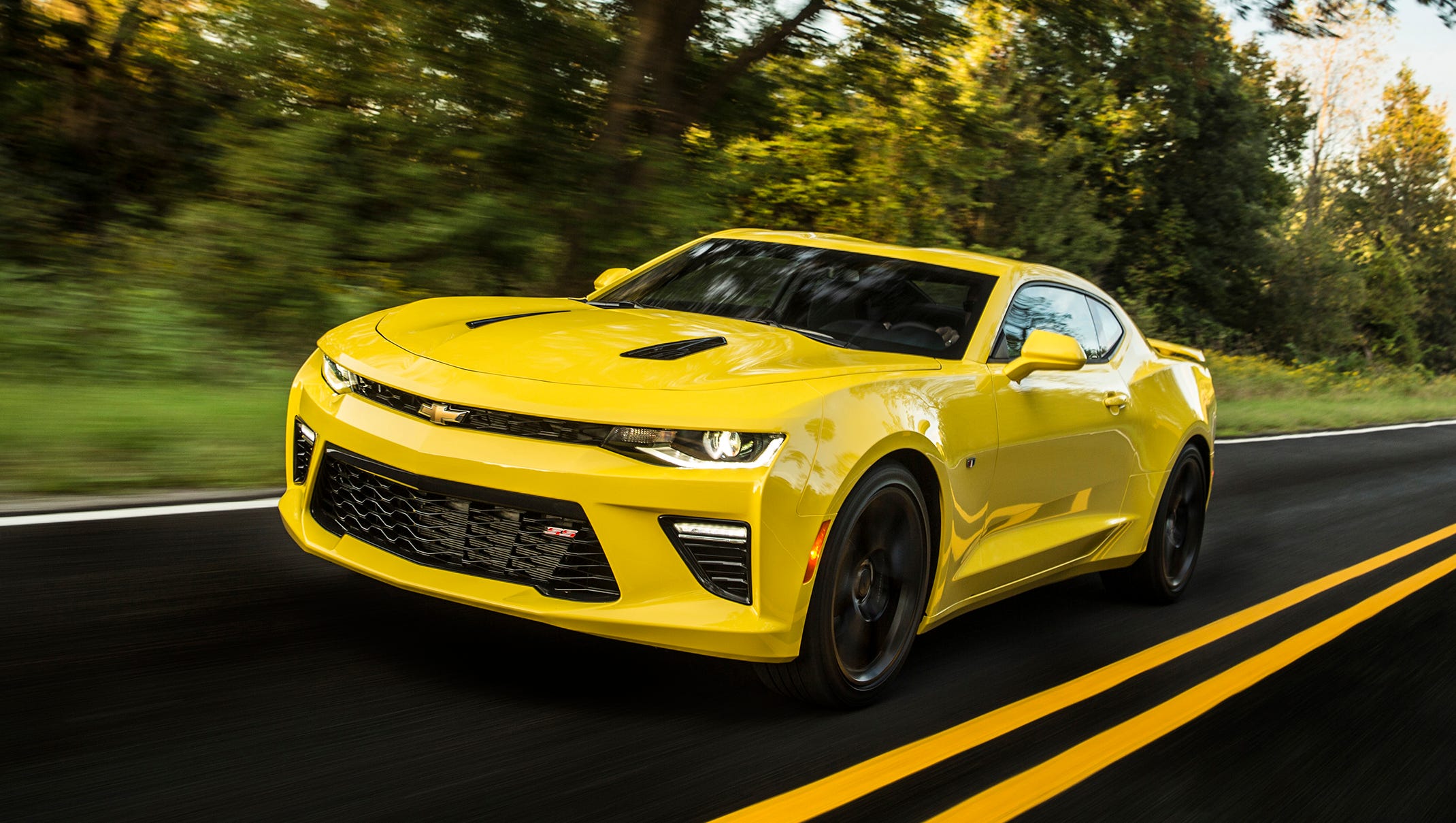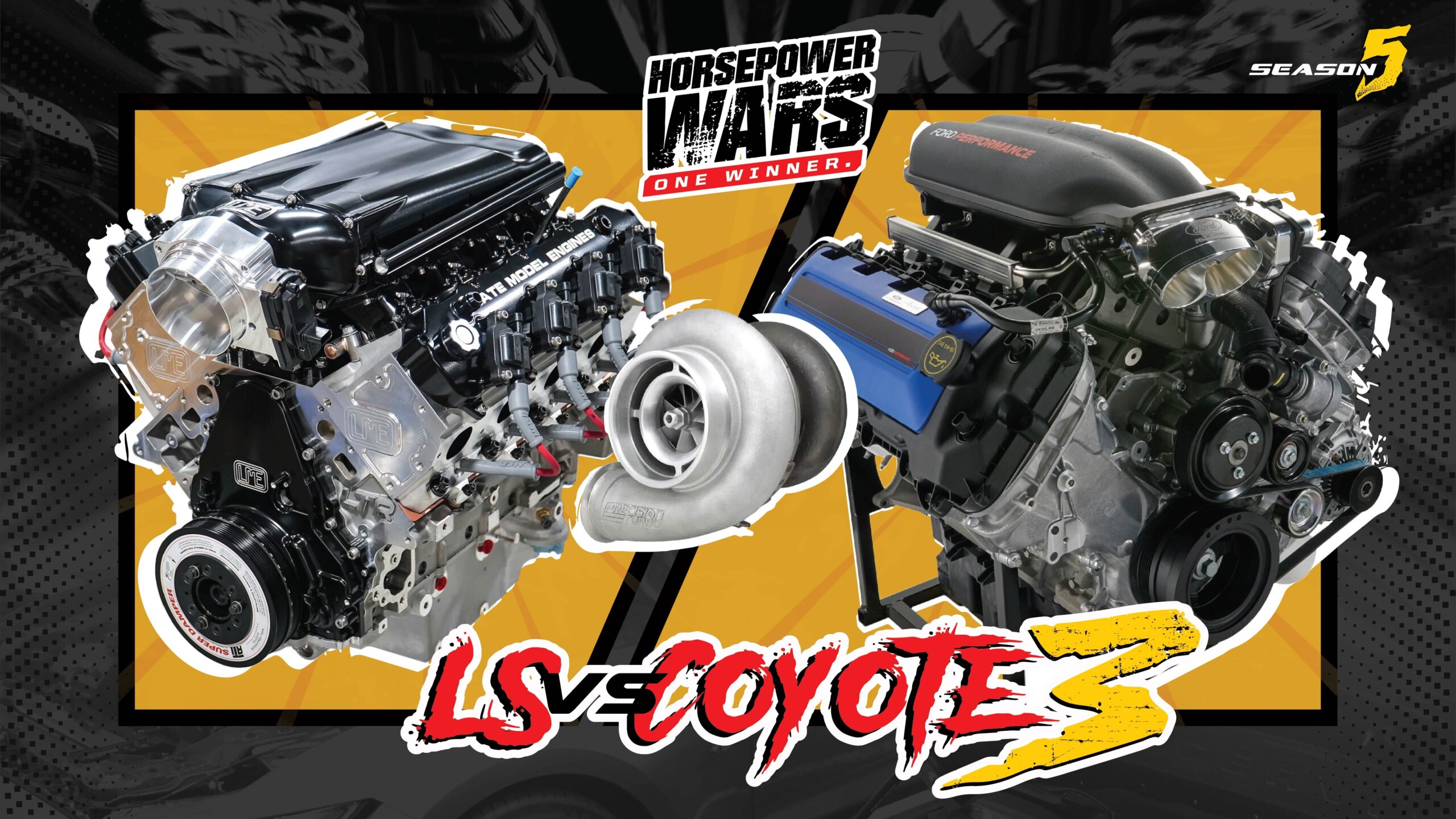Installing short shifters in cars is something muscle car enthusiasts have been doing since the dawn of motoring time. It is one of the simplest ways to get down the track faster by reducing the amount of travel between each gear’s gate. But outside of being able to shift faster, they offer a sturdier feel and striking good looks.
Our 2011 Mustang project car “Wild E. Coyote” boasts 600 rwhp through its Vortech supercharged Coyote 5-liter and an updated suspension from Ford Racing, though the remainder of the drivetrain has been otherwise untouched. We wanted to add some additional flare to Coyote’s relatively stock-looking interior while updating the problem-prone stock shifter assembly.
The main gripe in the 2011 Mustang’s shifter is the rear stabilizer that reinforces the shifter, plus the unneeded long throws. We turned to a company that has been making shifters longer than anyone else, Hurst, for their new Billet/Plus 2 shifter. It packs a whopping 27% throw reduction and improves upon the mighty 5.0’s drive-line, with a new billet aluminum base housing and a spherical pivot bearing. The higher durometer rear stabilizer bushing bolts into the stock bracket while reducing that sloppy shifter flex feel.
The Interchangeable upper stick will accept any Hurst stick with a two-bolt pattern or an addition stick is included that will retain the stock shift knob. A redesigned, spring loaded reverse lock-out improves factory “push down” lock-out detent design.
Installation
First start by removing the stock shift knob by simply unscrewing it counter-clockwise. Next, open the glove box so that you have access to the back portion of the center console. Carefully lift up the back so that all the console snaps release and then pull toward you. We disconnected all the wiring harnesses to ease the installation. Remove the three accessible bolts from the top and the fourth obstructed bolt from the bottom of the car, though we found that a ratchet-style wrench from the top worked too.
The rear shifter support will require a long (or a bunch of smaller) extensions to get around the driveshaft. With the two bolts out, simply pull the bushing backwards to release. The new bushing included with the kit is much stiffer than the stock counterpart and dramatically reduces flex under hard shifts with no additional noise.
There is a noticeable difference in build quality when comparing the stock shifter to Hurst's billet shifter. Once the pivot ball bushing cup is greased and transferred to the Hurst shifter, it is ready to go back in place with the new shifter base gasket. Also, the new rear shifter bushing will need to be greased once attached back to the factory bracket with zip ties.
Hurst gives you two choices in upper sticks - the black stick will allow you to reuse the stock shifter while the chrome version will work with the included Hurst shifter; of course we chose the Hurst stick and knob. Shifter noise is optional with the included rubber isolators that are placed between the shifter upper stick and assembly. Once the upper stick is assembled, make sure the new shifter works smoothly before installing the lower boot.
Included in the kit is a back up LED light that will illuminate when the vehicle is in reverse. This comes in handy since the shifter no longer has the 'push down and over' option and takes a little getting use to.
Not only does the Hurst shifter give you a better driving experience, it also looks a hell of a lot better than the factory shifter.
The main gripe of the MT-82 transmission has been the sloppy shifter and Hurst completely eliminates that problem.
While the Hurst shifter added some much needed bling to our relatively stock-looking Mustang’s interior, it also added function. The main gripe of the MT-82 transmission has been the sloppy shifter and Hurst completely eliminates that problem by giving you the ability to know that every time you shift you actually know it is in gear, and reducing the throw by 27% gets you there faster. The stiffer rear bushing assembly further reduces that feeling of bending the shifter during hard shift. With a street price of under $300 and an installation time of around two hours, this is possibly the easiest way to get down the track more consistently!




